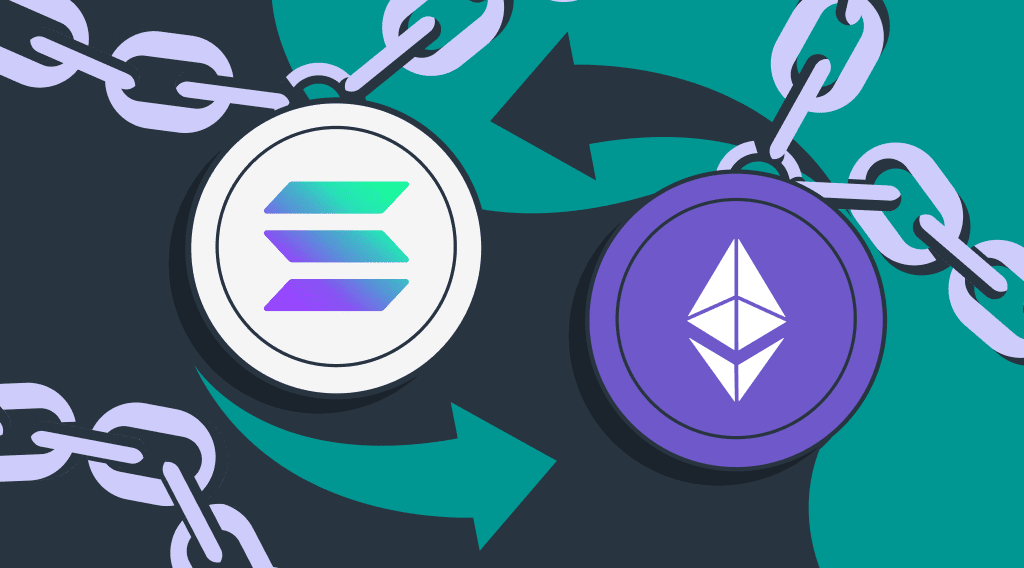
Exchanging SOL to ETH: A Comprehensive Guide on Trading Solana for Ethereum
Introduction
The cryptocurrency landscape is ever-changing, with new platforms and technologies being introduced continually. Among these, Solana (SOL) and Ethereum (ETH) stand as two leading blockchain ecosystems, each with its unique features, capabilities, and native tokens. While Solana prides itself on scalability and lightning-fast transactions, Ethereum is renowned for its smart contracts and decentralized applications (dApps).
But what if you’re invested in Solana and are considering diversifying into Ethereum, or vice versa? This comprehensive guide will walk you through the various ways to exchange SOL to ETH, covering aspects such as centralized and decentralized exchanges, fees, security, and much more.
Why Would You Want to Exchange SOL for ETH?
Before diving into the exchange process, it’s important to understand why someone might want to exchange SOL for ETH.
- Portfolio Diversification: Holding assets in different blockchains can help mitigate risks and potentially enhance returns.
- Investment Strategy: You may believe that Ethereum has stronger short-term potential or long-term viability.
- Ecosystem Participation: If you’re looking to engage with dApps or other services exclusive to a particular blockchain, you might need to swap your tokens.
- Arbitrage: The price of SOL and ETH can differ slightly across various exchanges, creating opportunities for arbitrage.
Types of Exchanges to Consider
Centralized Exchanges (CEX)
Examples:
- Binance: A widely-used exchange offering high liquidity for both SOL and ETH.
- Coinbase: Known for its user-friendly interface, but charges higher fees.
- Kraken: Offers robust security features and a wide range of cryptocurrencies.
Steps to Exchange:
- Registration: Sign up on the exchange and complete any KYC (Know Your Customer) requirements.
- Deposit: Add SOL tokens to your exchange wallet.
- Trade: Navigate to the SOL/ETH trading pair, and place your order.
- Withdraw: Once the trade is complete, withdraw your ETH to a secure wallet.
Decentralized Exchanges (DEX)
Examples:
- SushiSwap: A decentralized platform allowing you to swap SOL for ETH through the SushiSwap interface on the Solana network.
- Uniswap: Another option but requires wrapping SOL as an ERC-20 token first.
Steps to Exchange:
- Connect Wallet: Link your cryptocurrency wallet (e.g., MetaMask for Ethereum or Sollet for Solana) to the DEX.
- Wrap SOL (if needed): If the DEX requires SOL as an ERC-20 token, you may need to wrap it first.
- Swap: Follow the on-screen instructions to exchange SOL for ETH.
Hybrid Exchanges
Some platforms offer a blend of centralized and decentralized services, like eToro or Bitfinex. These platforms may provide additional financial tools like leverage and derivatives.
Fees and Costs
Centralized Exchanges
- Trading Fees: Usually range from 0.1% to 0.5%.
- Withdrawal Fees: Vary depending on the exchange and network congestion.
Decentralized Exchanges
- Gas Fees: These are transaction fees and can vary depending on network congestion.
- Liquidity Provider Fees: A small percentage (usually around 0.3%) is taken as a fee for the liquidity providers.
Security Aspects
Centralized Exchanges
- Two-Factor Authentication (2FA): Almost all reputable CEXs offer 2FA. Make sure to activate it.
- Insurance: Some centralized platforms offer insurance for your funds in case of a hack.
Decentralized Exchanges
- Private Keys: Make sure you have control of your private keys when using a DEX.
- Smart Contract Risk: The DEX operates on smart contracts, which can have vulnerabilities. Make sure the platform has been audited and has a good security track record.
General Tips
- Cold Storage: For large amounts, use a hardware wallet or another form of cold storage.
- Updates and Patches: Keep your wallets and software up-to-date.
Regulatory Considerations
Cryptocurrency regulations vary greatly depending on the jurisdiction. Centralized exchanges usually have robust mechanisms to comply with international laws, which is why they require KYC verification. DEXs often don’t require KYC but may restrict access based on your geographical location.
Risks and Precautions
- Price Slippage: In both CEXs and DEXs, the final amount of ETH you receive might be less than expected due to price fluctuations.
- Phishing Scams: Be wary of phishing websites masquerading as official exchanges.
- Transaction Limits: Both types of exchanges may have transaction limits based on various factors.
Final Thoughts
Exchanging SOL for ETH is a straightforward procedure but requires attention to various details like fees, security measures, and the choice between centralized and decentralized platforms. By considering these factors carefully, you can ensure a smooth and efficient exchange process.
Whether you’re looking to diversify your portfolio, or you have a specific use-case for Ethereum, understanding how to safely and effectively exchange your Solana (SOL) tokens for Ethereum (ETH) is a valuable skill in the ever-evolving world of cryptocurrency.
Remember to always do your research and possibly consult with a financial advisor to align your asset exchange strategy with your overall investment goals. With the increasing intersection of different blockchain ecosystems, the ability to easily swap one token for another is becoming more important than ever.